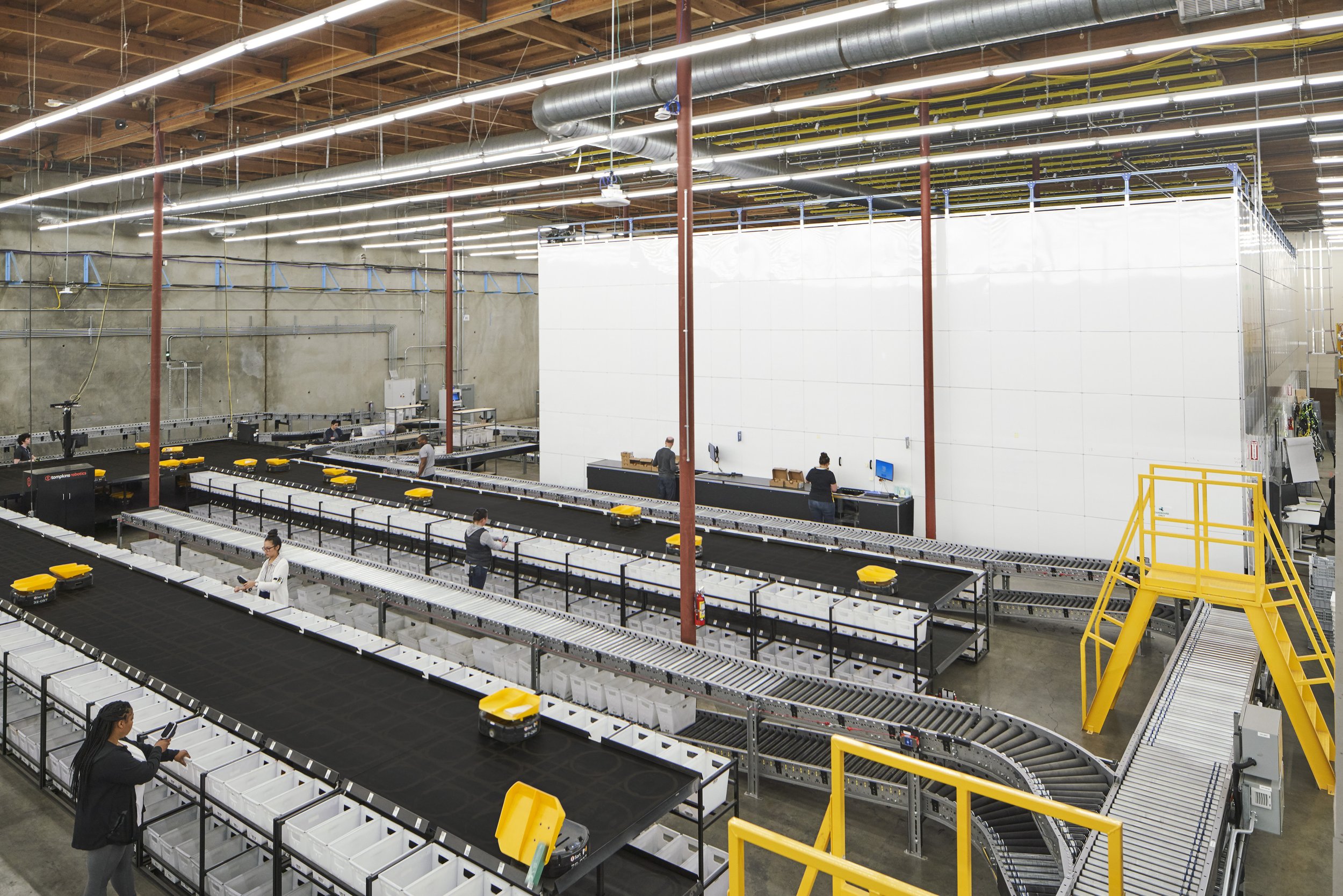Nordstrom Supply Chain Chief Talks Automation, AI
NORDSTROM'S AUTOMATED FULFILLMENT CENTERS UP TO FIVE TIMES MORE EFFICIENT THAN THOSE WITHOUT THE TECHNOLOGY
Nordstrom is using supply chain automation and artificial intelligence to catalyze the customer and employee experience.
At Shoptalk in Las Vegas this week, Nordstrom chief supply chain officer Alexis DePree described how the retailer’s automated fulfillment centers are up to five times more efficient than ones that haven’t gotten the technology upgrade. They’re handling higher order volumes while making better use of available space, DePree said.
Nordstrom’s 1-million-square-foot California omnichannel fulfillment center in Riverside, which came online three years ago to handle West Coast direct-to-consumer orders and shuttle merchandise to area stores, is one example on an automation win, DePree pointed out.
“[The fulfillment center] is powered by some great technology such as our sortation systems, and due to that we’re truly getting closer to the customer,” she said. “A large part of our customers are on the West Coast, yet we previously had more fulfillment centers on the East Coast. It’s fundamentally disrupting literally both coasts of customers, by working out of the facility.”
The automated and robotic asrs and sorting systems work in tandem to cut out-of-stocks with a technology footprint 90 percent smaller than legacy warehouse automation solutions, according to DePree.
Nordstrom’s automation results speak for themselves. Last year it saw a 20 percent improvement in distribution and fulfillment center productivity and throughput, which means orders got to customers at a faster clip.
DePree credited Nordstrom’s supply chain initiatives for a 200-basis-point improvement in selling, general, and administrative expenses and lower per-unit fourth-quarter costs.
Nordstrom’s supply chain automation ambitions complement the retailer’s use of AI to aid employees and customers. For example, AI-based styling algorithms pull together individual garments to curate full outfit looks but a human eye still lends a personal touch to deliver the final targeted recommendation. Someone shopping for occasionwear, for instance, will be served jewelry, handbag or shoe suggestions to finish out their ensemble.
“What’s cool about that is we’re still finding a way to leverage our employees in that experience, as well as still asking the stylist how to choose for the consumer and still connect that art and science on our website,” DePree said. “We still find that the art ensures that service and experience aren’t too technical.”
AI is also helping new Nordstrom associates quickly pick up new processes and products, as much as twice as fast as older training approaches, DePree said.
“More and more, it’s a way for us to actually build relationships with employees to make technology useful for them and fill their stores with pride,” she said. “We want to empower our employees and give them the chance to be successful each and every day. We want them to have flexibility in their lives. That’s something that we’ve been talking about across our corporate employees, as well as for our teams in our supply chain, fulfillment centers and then our store as well.”
Deploying these technologies doesn’t guarantee a quick fix because navigating today’s test-and-learn landscape “takes a lot of grit and resilience to navigate,” DePree said. Nordstrom has found itself rethinking how employees work, redefining success metrics and reconsidering how information flows across teams.
“When you’re running manual operations, you can throw additional hours in to recover if you made a mistake,” said DePree. “When you’re running highly automated technological products and solutions, you missed that and you’re not getting an hour back. That is lost capacity.”

















